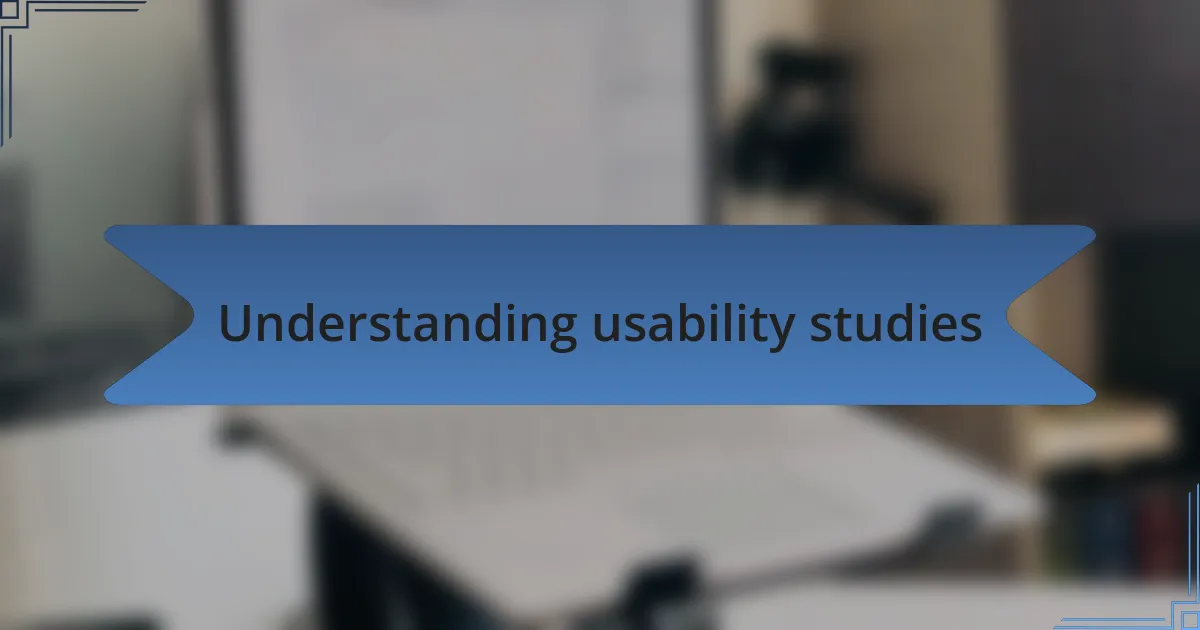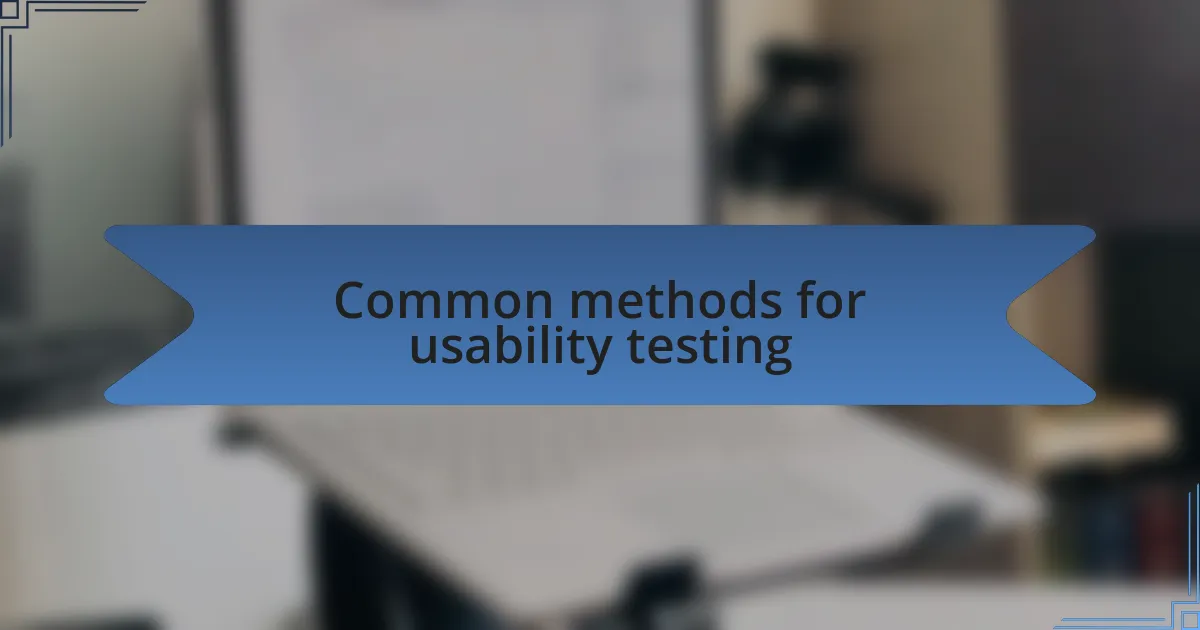Key takeaways:
- Usability studies reveal real user interactions, highlighting the necessity of viewing designs from their perspective.
- Techniques such as think-aloud protocols and moderated usability testing provide deep insights into user behavior and decision-making.
- Identifying and addressing user pain points can significantly enhance user experience and engagement, reinforcing the importance of user-centered design.
- Emotional responses to usability findings can inform design choices, fostering a more welcoming and intuitive user experience.

Understanding usability studies
Usability studies are an essential tool for understanding how real users interact with a product. I remember conducting my first study and feeling a mix of excitement and anxiety as users navigated my designs. Watching them struggle with what I thought were intuitive features made me realize the importance of viewing the project through their eyes.
When I think about usability, I often ask myself: what do users really need? This question propelled my early experiments. In one study, a user got lost in a navigation menu I had designed. Their frustration was palpable, and it hit me hard—my assumptions were blocking their journey. It became clear that usability is not just about aesthetics; it’s about facilitating clear and effective paths for users.
Through these studies, I learned that usability testing provides invaluable feedback that shapes how I approach software development. I recall a project where user insights led to a complete redesign of the interface. The transformation was astounding; what started as a challenging experience turned into something fluid and enjoyable, showcasing how vital usability is in creating user-centered designs.

Common methods for usability testing
One of the most common methods for usability testing is the think-aloud protocol, where users verbalize their thoughts while navigating a product. I vividly recall a session where a user expressed their inner dialogue as they interacted with my website. Listening to their immediate reactions gave me insights that I had never anticipated—sometimes, things that seemed clear to me were confusing to them. This method not only sheds light on user decision-making but also highlights the cognitive processes involved in navigating a design.
Another effective technique is moderated usability testing, which I have found incredibly revealing. In one instance, I facilitated a session where users were guided through specific tasks while I observed their behaviors. Their unfiltered responses and body language spoke volumes; some users displayed hesitation and uncertainty at key points, and I could directly address their confusion in real time. This interaction allowed me to ask follow-up questions, diving deeper into their thought processes, like when a user puzzled over a button placement that seemed intuitive to me but was unclear to them.
A more passive method I’ve employed is remote usability testing, which allows users to engage with a product in their natural environment. While it lacks the immediacy of face-to-face interactions, I discovered that it often yields candid feedback. I remember one user who, in the comfort of their home, described how they felt overwhelmed by choices on the landing page. Their openness was refreshing, showcasing how the setting could influence usability perceptions and encouraging me to think about user contexts when designing interfaces.

Practical applications of usability findings
Through usability studies, I’ve discovered a treasure trove of practical applications that can drastically improve user experience. For instance, after identifying frequent points of frustration in a test, I redesigned certain elements of a landing page. It was fascinating to see how these changes led to a noticeable increase in user engagement—who would have thought that a simple tweak could have such a profound impact?
Consider the power of tailoring features based on user feedback. A few months ago, during a session, I noticed users consistently struggled with the navigation bar. This observation prompted me to reevaluate its design, ultimately leading to more intuitive categories. When I implemented this change, users expressed relief and excitement, which I found incredibly rewarding. Isn’t it amazing how directly addressing user pain points can enhance their experience and foster loyalty?
Moreover, the emotional aspects of usability findings can shape our overall approach to design. During one usability test, a participant shared their frustration with a long sign-up process. This led me to reflect on how a streamlined registration could not only reduce drop-off rates but also create a sense of welcome and ease for new users. I often ask myself, how do our designs make users feel? When we prioritize emotional responses, we can create products that resonate on a deeper level.